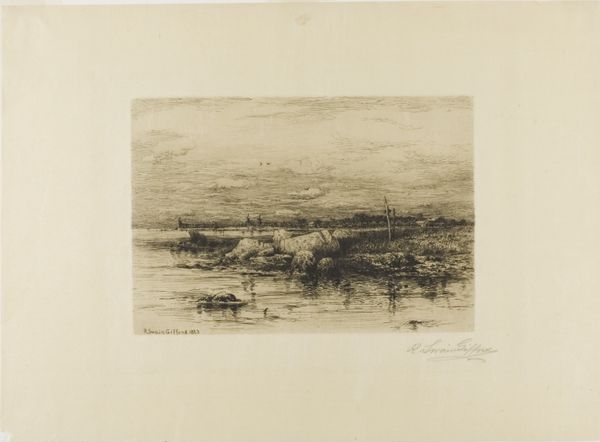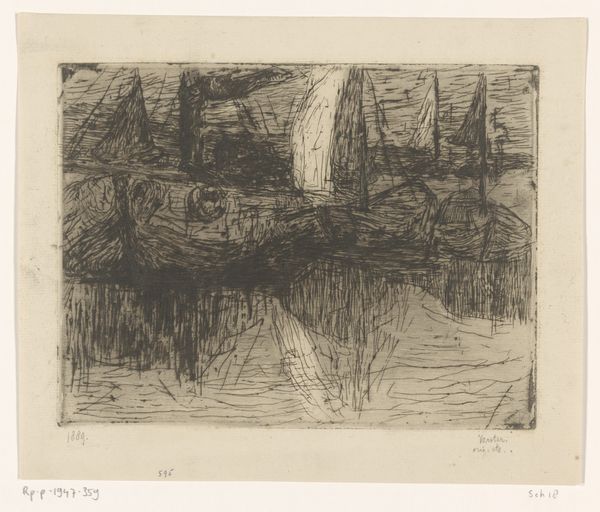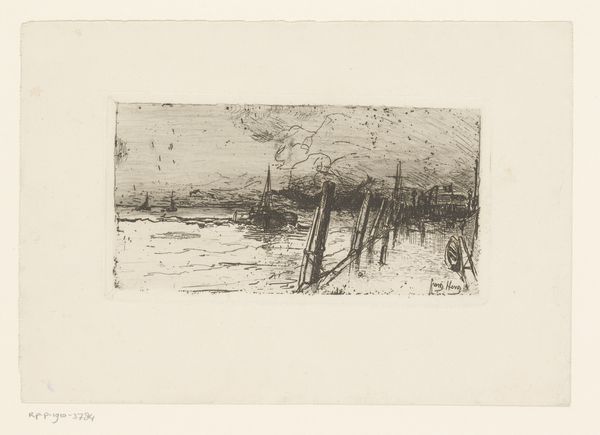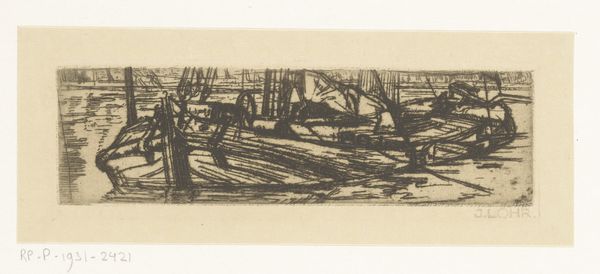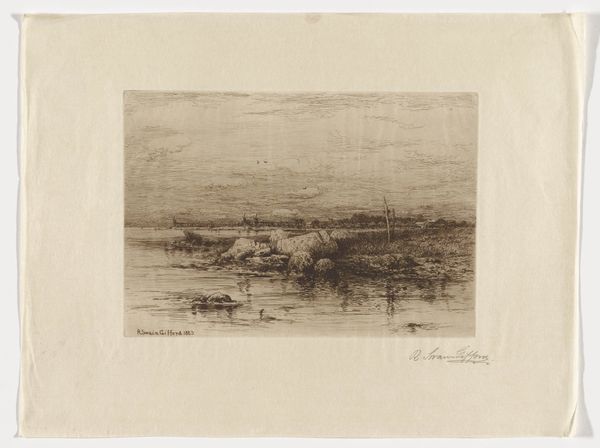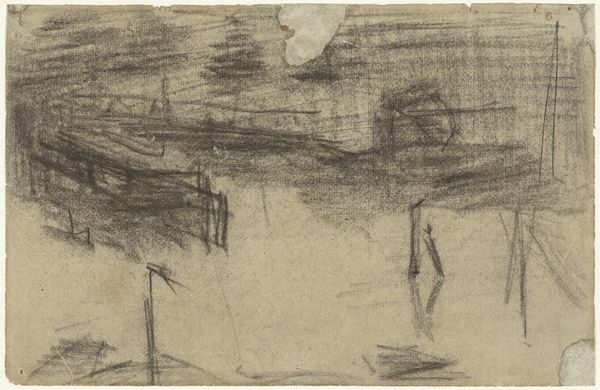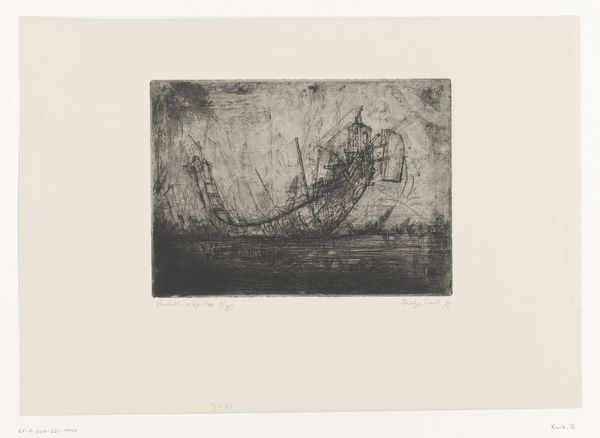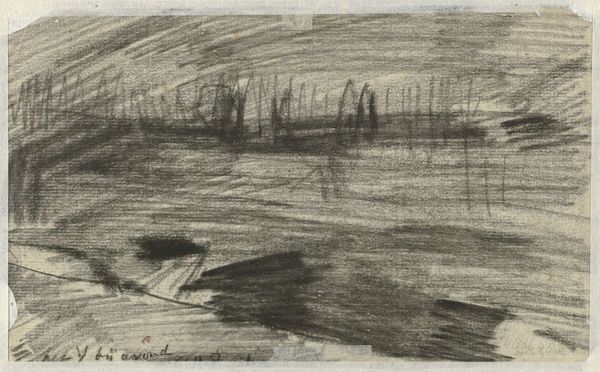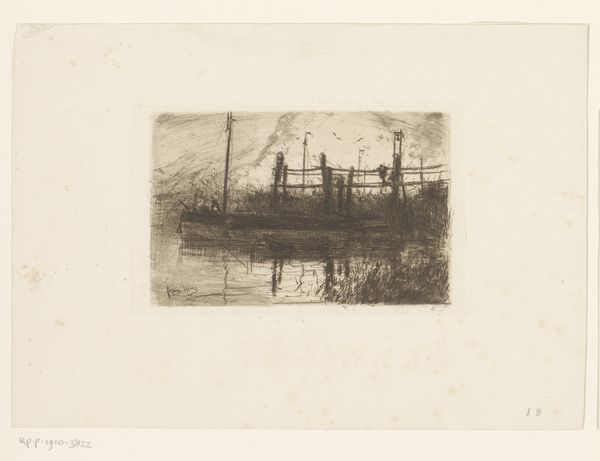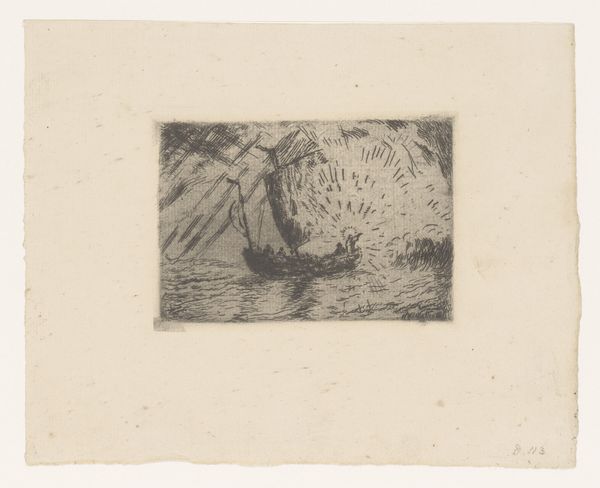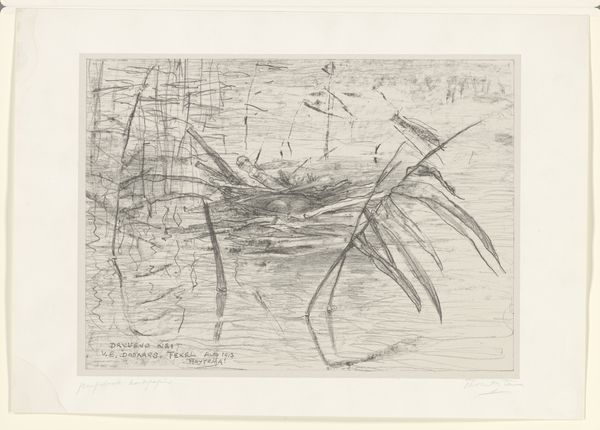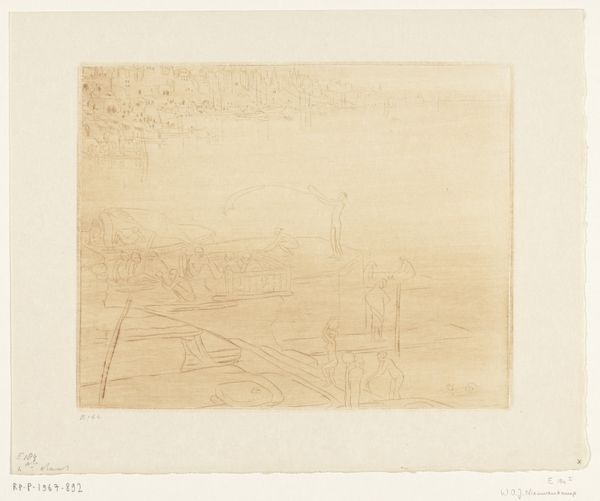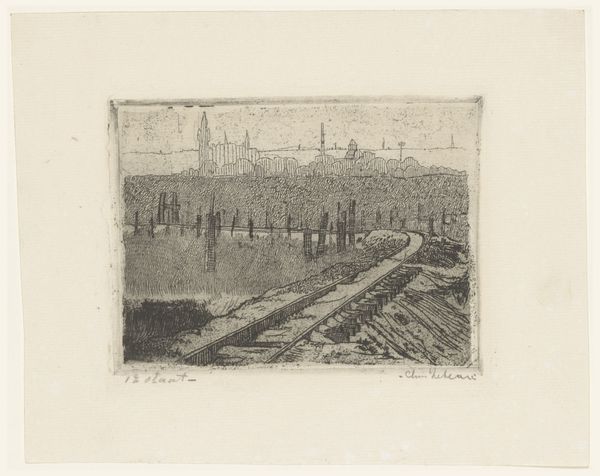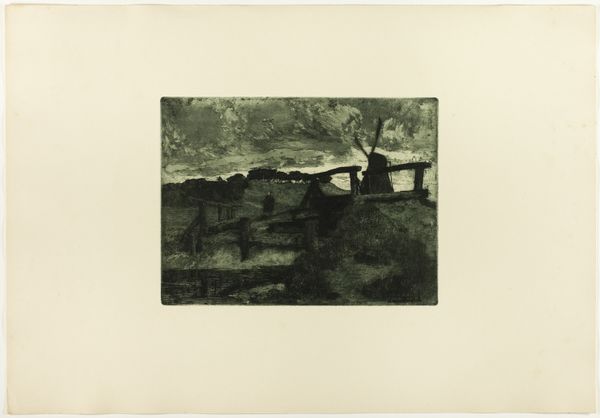
drawing, print, etching, paper
#
drawing
# print
#
impressionism
#
etching
#
landscape
#
paper
#
cityscape
Dimensions: 127 × 316 mm (image/plate); 265 × 435 mm (sheet)
Copyright: Public Domain
Curator: Good morning, I'm thrilled to discuss Otto Henry Bacher's etching "Rainy Night", created sometime between 1880 and 1882 and now residing here at the Art Institute of Chicago. Editor: Immediately, it strikes me as incredibly atmospheric. There's a sense of enclosure, of being almost swallowed by the rain and the night, wouldn't you say? Curator: Certainly. Bacher's technique is particularly effective here. Look at how he uses densely packed vertical lines to represent the rain, obscuring the cityscape behind. It’s an excellent example of how the medium itself, etching, lends itself to creating mood. The lack of distinct lines creates visual diffusion that feels like the haze and wetness of a rainy urban night. Editor: Yes, there's almost an oppressive feel. And consider that lone figure in the boat – it punctuates the feeling of isolation amidst the city. Were these urban scenes a typical subject for him? Curator: Bacher's urban landscapes reflected a broader interest among artists of the time in capturing the changing face of cities, particularly focusing on effects of weather. These types of images are part of the history of depicting modern life and the realities of the urban experience. These are also reflections on a pre-electrification world, or, perhaps more specifically, images of a society in transition between old and new. The artist captures what would become increasingly uncommon images as urban life evolves with advancements. Editor: I see, a kind of pre-modern melancholy, then, about disappearing ways of life. Semiotically speaking, the boat becomes a rather loaded signifier in this context, doesn't it? Curator: Precisely! It's also interesting to note Bacher's contemporaries, the Impressionists were captivated with similar effects, but mainly using painting techniques instead. However, one could argue that his reliance on the etching technique serves him even more, it does well to emphasize certain formal values present across Impressionistic outputs of the time. Editor: A fascinating bridge, indeed! Thinking about its place in the museum, one could also explore how it challenges common understanding of Impressionism through medium specificity. Curator: Exactly. This little print raises compelling questions about medium and subject. A powerful statement despite its size and limited palette. Editor: It's left me pondering the relationship between technological shifts and our sentimental grasp on ephemeral moments. Curator: As it should! The beauty of art, in my opinion.
Comments
No comments
Be the first to comment and join the conversation on the ultimate creative platform.
